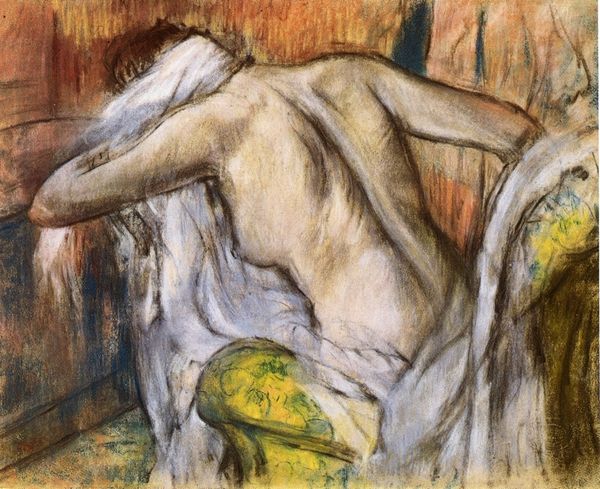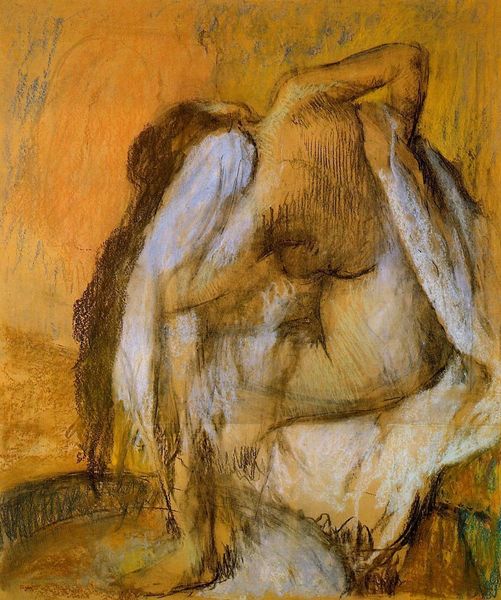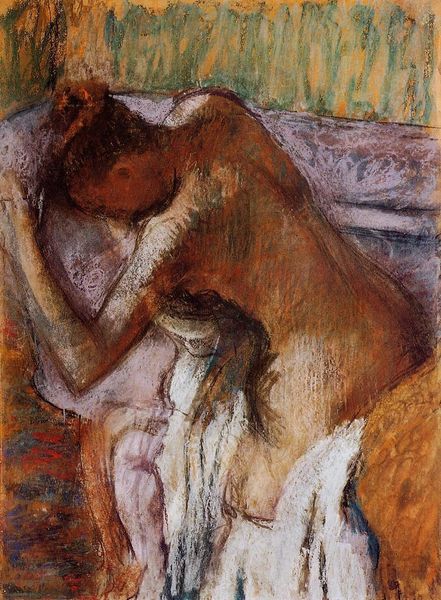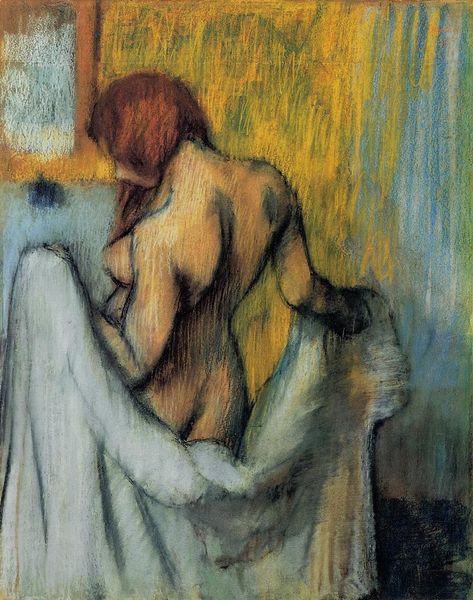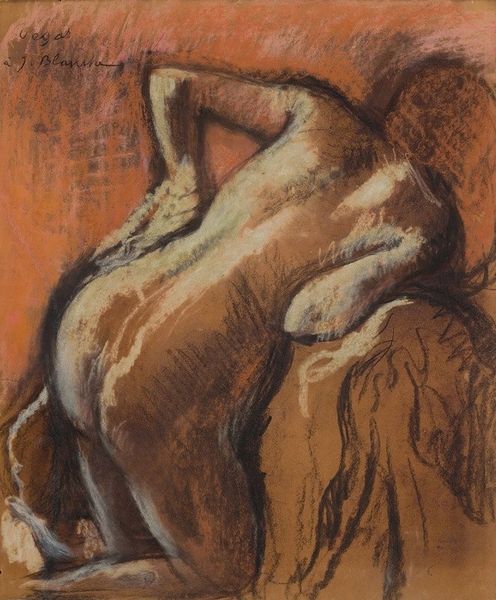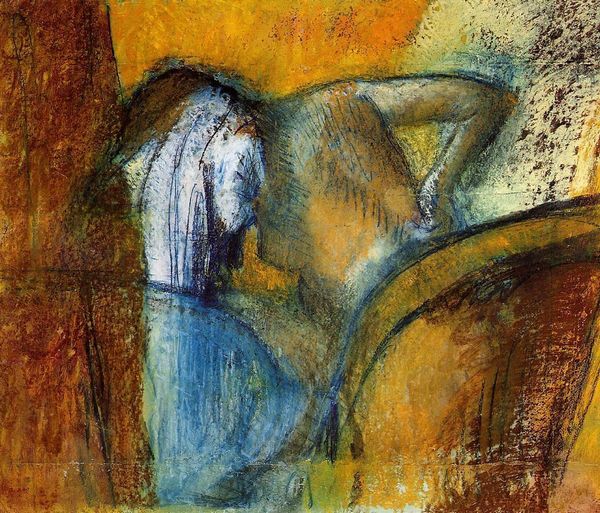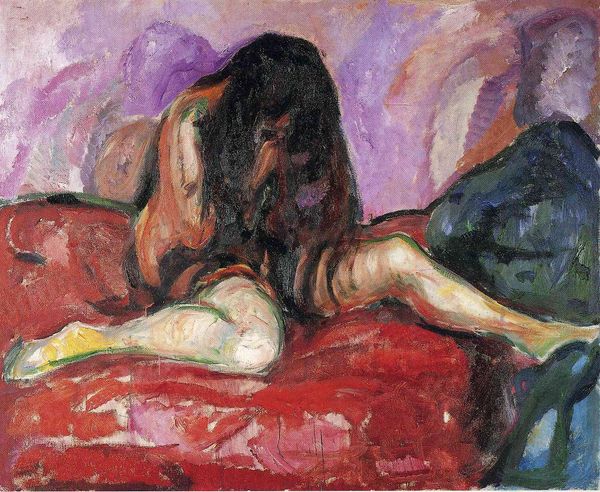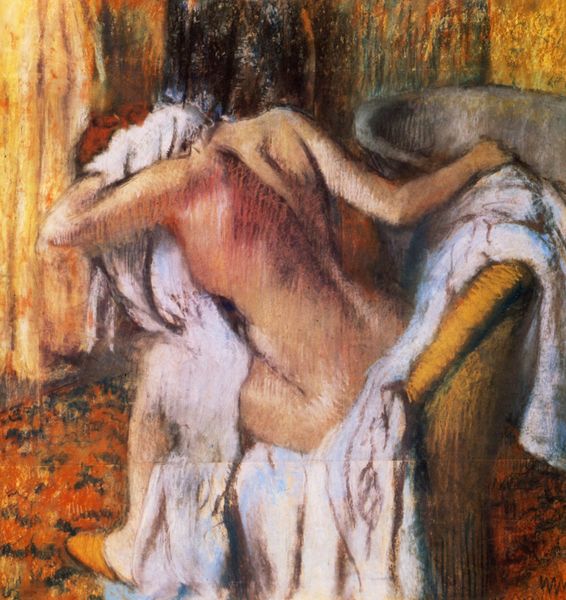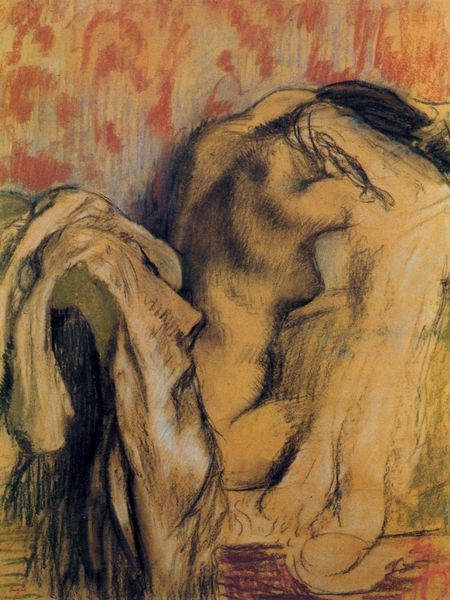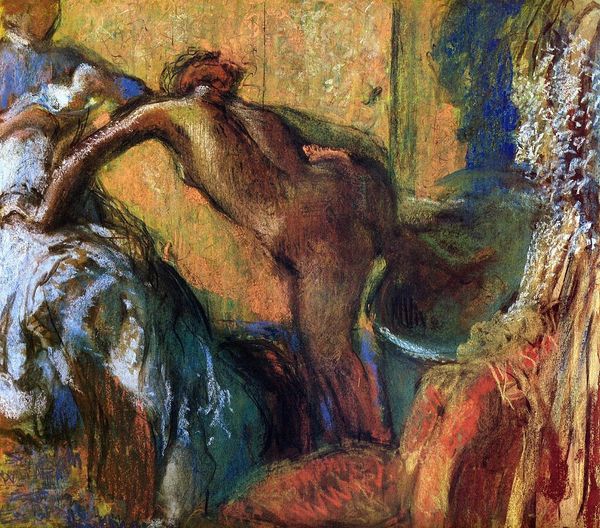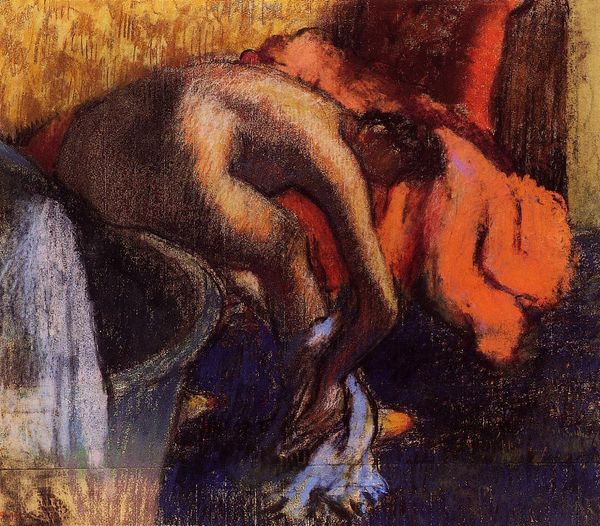
Copyright: Public domain
Edgar Degas made this pastel drawing, "Woman Drying Herself," sometime in the late 19th or early 20th century. Pastels are interesting. They are essentially pure pigment, ground and bound into sticks. Degas built up the image through layers of strokes, creating a dense, almost sculptural surface. The powdery quality of the pastel lends itself well to depicting the softness of skin and fabric. But it is not a forgiving medium. In this image, Degas's focus on the materiality of the pastel is essential to the work's social context. He often depicted women in intimate, private moments, performing everyday tasks like bathing or drying themselves. By using pastel, a medium associated with immediacy and spontaneity, Degas creates a sense of witnessing a fleeting, unguarded moment. The very directness of the medium, and its lack of pretense, is what makes this image so compelling. Looking closely at materials and making helps us appreciate the power of this work, and how it blurred the boundaries between fine art and the everyday.
Comments
No comments
Be the first to comment and join the conversation on the ultimate creative platform.
